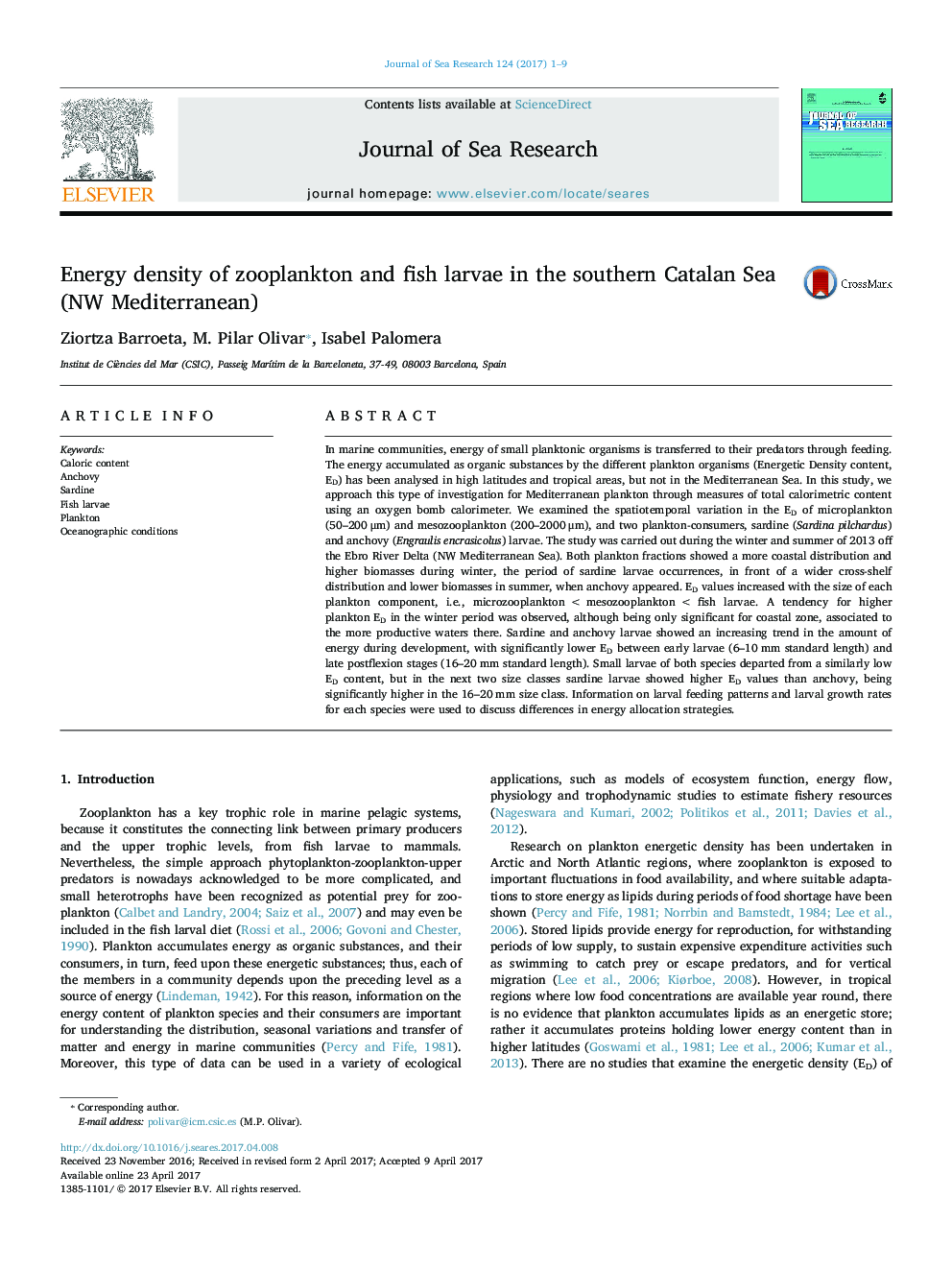| کد مقاله | کد نشریه | سال انتشار | مقاله انگلیسی | نسخه تمام متن |
|---|---|---|---|---|
| 5766130 | 1627451 | 2017 | 9 صفحه PDF | دانلود رایگان |
عنوان انگلیسی مقاله ISI
Energy density of zooplankton and fish larvae in the southern Catalan Sea (NW Mediterranean)
ترجمه فارسی عنوان
تراکم انرژی زئوپلانکتون و لاروهای ماهی در دریای جنوب کاتالان (شمال غربی دریای مدیترانه)
دانلود مقاله + سفارش ترجمه
دانلود مقاله ISI انگلیسی
رایگان برای ایرانیان
کلمات کلیدی
محتوای کالری، ماهی کولی، ساردین، لاروهای ماهی، پلانکتون، شرایط اقیانوسی،
موضوعات مرتبط
مهندسی و علوم پایه
علوم زمین و سیارات
اقیانوس شناسی
چکیده انگلیسی
In marine communities, energy of small planktonic organisms is transferred to their predators through feeding. The energy accumulated as organic substances by the different plankton organisms (Energetic Density content, ED) has been analysed in high latitudes and tropical areas, but not in the Mediterranean Sea. In this study, we approach this type of investigation for Mediterranean plankton through measures of total calorimetric content using an oxygen bomb calorimeter. We examined the spatiotemporal variation in the ED of microplankton (50-200 μm) and mesozooplankton (200-2000 μm), and two plankton-consumers, sardine (Sardina pilchardus) and anchovy (Engraulis encrasicolus) larvae. The study was carried out during the winter and summer of 2013 off the Ebro River Delta (NW Mediterranean Sea). Both plankton fractions showed a more coastal distribution and higher biomasses during winter, the period of sardine larvae occurrences, in front of a wider cross-shelf distribution and lower biomasses in summer, when anchovy appeared. ED values increased with the size of each plankton component, i.e., microzooplankton < mesozooplankton < fish larvae. A tendency for higher plankton ED in the winter period was observed, although being only significant for coastal zone, associated to the more productive waters there. Sardine and anchovy larvae showed an increasing trend in the amount of energy during development, with significantly lower ED between early larvae (6-10 mm standard length) and late postflexion stages (16-20 mm standard length). Small larvae of both species departed from a similarly low ED content, but in the next two size classes sardine larvae showed higher ED values than anchovy, being significantly higher in the 16-20 mm size class. Information on larval feeding patterns and larval growth rates for each species were used to discuss differences in energy allocation strategies.
ناشر
Database: Elsevier - ScienceDirect (ساینس دایرکت)
Journal: Journal of Sea Research - Volume 124, June 2017, Pages 1-9
Journal: Journal of Sea Research - Volume 124, June 2017, Pages 1-9
نویسندگان
Ziortza Barroeta, M. Pilar Olivar, Isabel Palomera,
